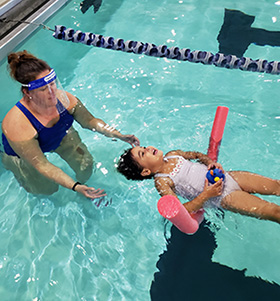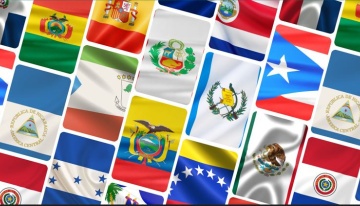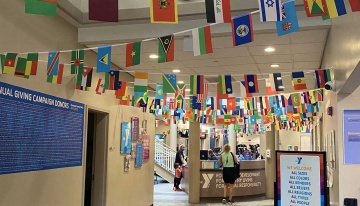intro
Josh and his daughters were enjoying a hike when his daughter Cassidy fell into a creek unexpectedly and ended up hidden under a collapsed bridge. Because Cassidy had learned water safety principles at YMCA of Greater Brandywine, she knew that floating on her back could help keep her alive until her dad was able to pull her out of the water. Watch their family’s story here.
 As temperatures rise in the summer, families often take to the water. But many do not know that drowning remains one of the leading causes of preventable deaths for children in the U.S., with nearly 900 deaths each year, and that drowning rates are higher for communities of color.
As temperatures rise in the summer, families often take to the water. But many do not know that drowning remains one of the leading causes of preventable deaths for children in the U.S., with nearly 900 deaths each year, and that drowning rates are higher for communities of color.
The Y introduced group swim lessons over 110 years ago in 1909. Now, as one of the largest community-based organizations in the U.S., the Y teaches more than a million children invaluable water safety and swimming skills each year, with intentional outreach to communities with higher rates of drowning. The Y's Safety Around Water program teaches basic water safety skills and helps kids build confidence in and around the water. The program focuses on kids ages four to 14, but the age ranges can be adjusted to meet the needs of the community.
We Still Have Work to Do
According to the Centers for Disease Control (CDC), the following groups are at a higher risk of drowning:
-
Ages 1-14
Drowning is the second-leading cause of unintentional injury or death behind motor vehicle crashes for children ages one to 14.
-
80%
Males make up almost 80% of those who die from drowning.
-
2x
Drowning death rates for American Indian or Alaska Natives under age 29 are two times higher than for their white counterparts.
-
2.6x & 3.6x
Drowning death rates among Black children ages five to nine are 2.6 times higher than white children the same age and 3.6 times higher for ages 10 to 14.
-
7.6x
In swimming pools, Black children ages 10 to 14 drown at rates 7.6 times higher than white children of the same age group.
-
Medical Conditions
People with seizure disorders such as epilepsy are at a higher risk of fatal and nonfatal drowning than the general population. Other medical conditions such as autism and heart conditions are also associated with a higher risk of drowning.
Find Ys that offer special needs swimming instruction
The YMCA is driven by the belief that teaching children not just how to swim, but also how to be safe in and around water, is not a luxury; it is a necessary life skill and part of the Y’s mission to serve all.
test
 The Y’s Safety Around Water program is unique in that it specifically targets underserved kids and teens, particularly those from Black and Hispanic communities, who are at the highest risk of drowning. The program is customized to meet the unique needs of the thousands of communities that the Y serves and may include the following:
The Y’s Safety Around Water program is unique in that it specifically targets underserved kids and teens, particularly those from Black and Hispanic communities, who are at the highest risk of drowning. The program is customized to meet the unique needs of the thousands of communities that the Y serves and may include the following:
- No-cost sessions in partnership with schools and other local organizations
- Transportation from schools and other community partners
- Mobile programs at pools in apartment complexes, homeowners’ associations (HOAs), hotels, etc.
- Virtual and dry land education components
- Stories of impact from community leaders
- Locally produced public service announcements (PSAs) to educate about the importance of swim lessons and water safety on local access television and social media
Swimming lessons alone cannot prevent water-related deaths, but they do teach valuable lifelong skills that can reduce drownings. The YMCA is driven by the belief that teaching children not just how to swim, but also how to be safe in and around water, is not a luxury; it is a necessary life skill and part of the Y’s mission to serve all.





